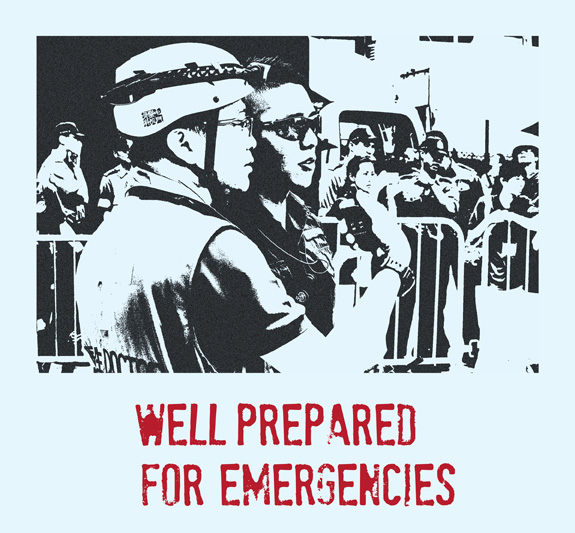
Conducting drills and exercises is to safeguard that contingencies can be properly managed. Tasked with protecting the health and well-being of Hong Kong citizens, HA is obliged to provide prompt and professional medical care to people in emergency situations. That explains why HA gives great emphasis on drills to ensure emergency responders are familiar with contingency plan and procedures in handling emergencies, and to seek for improvement.
The Head Office Major Incident Control Centre (MICC) has organised more than 10 exercises of different types of drills last year to test the response of hospitals and government departments in various kinds of incidents. These exercises provide colleagues with practical experience of handling emergencies, including the need to communicate and coordinate with parties outside HA.
Andy Kung, Coordinator of Head Office MICC, expresses that a diverse range of drills are regularly organised and executed at the corporate and cluster levels nowadays and the number of exercises conducted is numerous.The drills cover large, medium and small-scale incidents, such as inter-organisational hill fire exercise; power outage in hospital; and hospital fire drill and clinical waste leakage exercise.
The focus of the drills is determined with reference to past incidents and also rare-but-possible events. Examples include transferring patients with suspected infectious disease and explosion in an outdoor event. Participants include not only frontline colleagues but also management, so as to gain organisational and practical experience.
Post-drill debriefing and review meetings are a crucial part of improving existing contingency plans. Hong Kong East Cluster Chief Executive Dr Lau Chor-chiu is a highly experienced drill organiser who has been promoting the importance and use of such exercises since the 1990s. “We cannot simply formulate contingency plans behind closed doors – we need to test how they apply in practice,” he says. “Imagine a scenario in which a large number of disaster victims are brought to a hospital – how will frontline colleagues distinguish them from other patients and conduct appropriate triage? The best litmus test in such situations is through practical experience.”
Dr Lau adds that lessons learned during drills help enhance HA’s contingency plans. One example relates to response planning for civil disasters. In such situations, reporters and family members of victims would gather in hospital. Setting up a help desk can effectively handle their questions and concerns.
On Christmas day of 2016, a crash involving three cars on the San Tin Highway injured over 40 people. Emergency responders rapidly freed passengers trapped in the vehicles and ambulance officers triaged casualties using a red, yellow and green band system to indicate injury severity before transporting them to hospital for treatment. The communication and cooperation among all onsite and remote units proceeded smoothly due to the experience gained during annual civil disaster drills.



